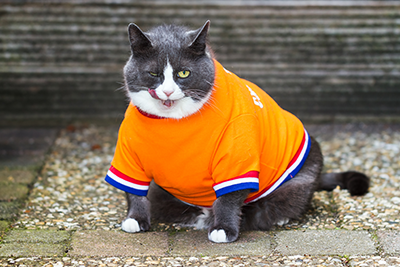How To Manage Cat Obesity

Almost 60% of indoor cats are overweight and could benefit from a veterinarian-supervised weight loss plan. Still, many cat owners are surprised when their vet mentions weight loss.
Just like humans, cats are usually obese due to combination of poor diet and lack of exercise. If a vet has already ruled out other conditions that contribute to cat obesity - like diabetes and hypothyroidism - it’s time to make a new plan.
Here are some tips for managing cat obesity and promoting lifelong health for your favorite feline.
Rethink Food and Treats
The first thing to tackle is your cat’s diet - and the first thing you’ll learn is that many common beliefs about cat food aren’t true.
Although dry food is usually considered a healthier alternative to wet food, this isn’t the case. Dry foods are typically higher in carbohydrates, which isn’t great for overweight cats. Switch to wet foods that are higher in protein, following instructions from your vet.
Another myth is that your cat’s food dish should stay full all day long so they don’t feel deprived. Many people assume a cat’s appetite is self-regulating, but this isn’t true. Open feeding often leads to obesity.
Regulate your cat’s food intake and feed just twice per day. The amount varies by cat - following your vet’s recommendation - and you may need to separate your pets during feeding times if you have multiple cats.
Also, avoid giving treats and milk. While your cat’s pleas for these extras tug at the heartstrings, it’s important to remember that you could be harming your kitty. Excessive treats and fatty drinks contribute to gastrointestinal problems, heart disease, and obesity in cats.
Add Daily Movement
It’s also important to add some exercise to your cat’s daily routine. Toys, especially laser pointers and cat dancers, work with a cat’s natural desire to chase things around.
Ideally, shoot for at least 20 to 30 minutes of active play with your cat each day. If toys and playing don’t seem to interest them, trying putting their food up in a more challenging place to access, or pull individual bits of food out and hide them in open boxes for kitty to find.
Support Lifelong Health
If you follow these recommendations for better diet and exercise, you’ll likely see a reduction of your cat’s weight within 8 months. Don’t be discouraged if it takes a full year to reach the ideal weight recommended by your vet. Slow and steady weight loss is the goal.
You can also support healthy weight management by scheduling your cat for regular vet visits and ensuring there are no underlying health conditions. Liver disease, for example, can interfere with their ability to absorb nutrients properly. Even something as simple as dry skin can make a cat lethargic, affecting their weight.
As your kitty loses weight, keep an eye on their behavior, appetite, and body functions and mention any suspicious changes to your vet. With time, your cat will reach a healthy weight that promotes a long life of wellness and happiness.
For more information about cats and obesity, connect with Academy Animal Hospital.
